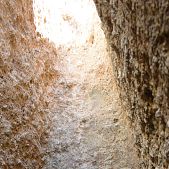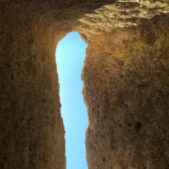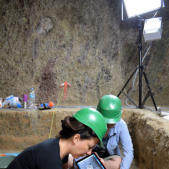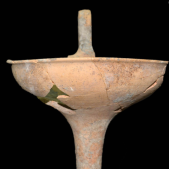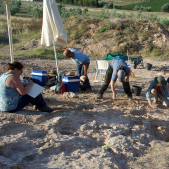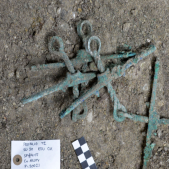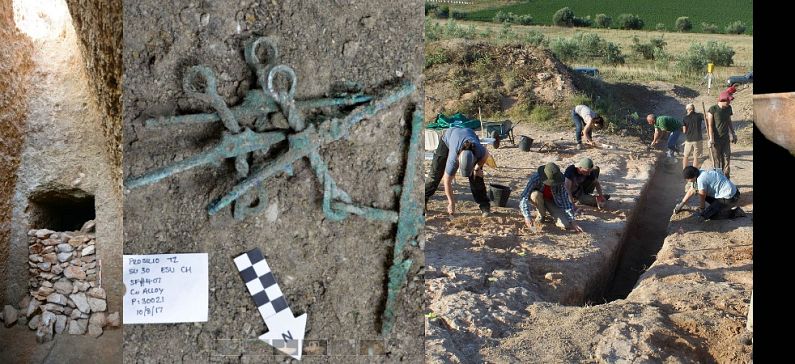
Archaeologists unearth one of largest Mycenaean-era tombs in Greece
A Mycenean-era carved tombs, one of the largest of such tombs ever found in Greece, has been unearthed in Orchomenos, about 100 km northwest of Greek capital of Athens, the Greek Culture Ministry announced. Dated back to the middle of the 14th century B.C., it is the ninth-largest chamber tomb out of roughly 4,000 excavated in the last 150 years.
The discovery was made in Prosilio site during the first year of a five-year cooperation program between the local Viotia Antiquities Ephorate and the British School at Athens (BSA) and Cambridge University.
The construction, which is monumental and reflects the special care that was paid for its creation, consists of a funeral chamber, which carries a carved road, 20 meters long, which ends in an impressive room of 42 square meters. The four sides of the hall have a circular tabletop covered with clay. The original roof height, which had the shape of a rocky roof, is estimated at 3.5 meters. However, the original roof began to collapse already in antiquity, perhaps even in the Mycenaean period, giving a cave-like appearance to the interior of the chamber, totaling 6.5 meters.
On the floor of the chamber, archaeologists found the remains of a man aged 40 or 50 years old, surrounded by horses’ reins, bow parts, arrows, pins, jewelry, combs, a seal and a seal ring. The construction of the tomb dates back to the middle of the 14th century. B.C. and its value lies in the fact that it yielded one of the best documented tombs of the palatial period in mainland Greece. It is noteworthy that individual burials with important finds are rarely preserved in monumental Mycenaean chamber tombs, since Mycenean chamber tombs tended to be reused for multiple burials across generations, so that grave goods were disturbed or looted. The Prosilio tomb is exceptional in that all the items found were linked to the single dead body buried there, giving archaeologists greater insights into burial practices of the period. The tomb is believed to be linked to the nearby Orchomenos palace complex that dominated the area in the 14th and 13th centuries B.C. and to belong to a member of the upper social classes of the time.

